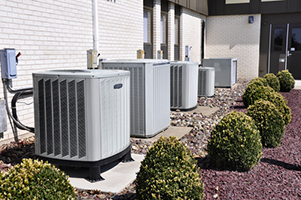 New cases of type 2 diabetes have skyrocketed in the last 20–30 years. And people suffering are becoming younger and younger.
New cases of type 2 diabetes have skyrocketed in the last 20–30 years. And people suffering are becoming younger and younger.
Most often bad diet and lack of exercises take the blame for this.
But new research reveals another cause. One that is much easier to manage than our yummy diet or stubborn belly jelly.
All it takes is a press of a button on your air-conditioner (or central heating).
As summarized by a new Dutch review study, many researchers have revealed over the years that our glucose metabolism is impaired by warm temperatures and accelerated by mildly cold temperatures.
The more glucose your body burns for energy, the less likely it is that high blood glucose will trigger insulin resistance and set you on the route to type 2 diabetes.
This does not mean that you have to turn down your indoor heating until you shiver. Mild cold between 17 and 19°C (62 and 66°F) suffices. This is just 2–5°C cooler than the temperature at which central heating and air-conditioners are most commonly set.
Interestingly, some studies also show that mild heat increases insulin sensitivity.
Taking advantages of both aspects, exposure to intermittent mild heat and mild cold for 10 days can increase the insulin sensitivity of type 2 diabetics by 40 percent.
This is as much as, or even more than, the best diabetes drugs can offer.
For this reason, the authors recommend that temperature control in buildings should not be static, but rather dynamic, with temperatures varying between 15 and 25°C or 59 and 77°F.

 Overcoming IBD
Overcoming IBD Multiple Sclerosis
Multiple Sclerosis Banishing Bronchitis
Banishing Bronchitis Gum Disease Gone
Gum Disease Gone Overcoming Onychomycosis
Overcoming Onychomycosis Neuropathy No More
Neuropathy No More The Prostate Protocol
The Prostate Protocol Brain Booster
Brain Booster
 Ironbound
Ironbound
 Solution for Shingles
Solution for Shingles
 The Bone Density Solution
The Bone Density Solution
 The Ultimate Healing Protocol
The Ultimate Healing Protocol
 The Parkinson's Protocol
The Parkinson's Protocol
 The Chronic Kidney Disease Solution
The Chronic Kidney Disease Solution
 Overthrowing Anxiety
Overthrowing Anxiety The Fatty Liver Solution
The Fatty Liver Solution The Hypothyroidism Solution
The Hypothyroidism Solution
 The End of Gout
The End of Gout The Blood Pressure Program
The Blood Pressure Program
 The Oxigized Cholesterol Strategy
The Oxigized Cholesterol Strategy
 Stop Snoring And Sleep Apnea Program
Stop Snoring And Sleep Apnea Program
 The Arthritis Strategy
The Arthritis Strategy The Vertigo & Dizziness Program
The Vertigo & Dizziness Program The 3-Step Diabetes Strategy
The 3-Step Diabetes Strategy Hemorrhoids Healing Protocol
Hemorrhoids Healing Protocol The Erectile Dysfunction Master
The Erectile Dysfunction Master Weight Loss Breeze
Weight Loss Breeze The IBS Program
The IBS Program The Insomnia Program
The Insomnia Program The Migraine and Headache Program
The Migraine and Headache Program The Neck Pain Solution
The Neck Pain Solution The Menopause Solution
The Menopause Solution The Ejaculation Master
The Ejaculation Master The TMJ Solution
The TMJ Solution The Acid Reflux Solution
The Acid Reflux Solution The Fibromyalgia Solution
The Fibromyalgia Solution The Psoriasis Strategy
The Psoriasis Strategy